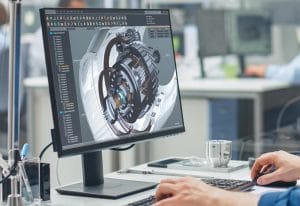 Modern heat exchangers owe their popularity to a variety of different factors. On one hand, the innovative heat transfer methods they utilize can offer far more efficient and affordable electrical cooling compared to more traditional options. Companies that use them can save significantly on costs that include energy usage, routine maintenance, and more. On the other hand, their simplified designs, which don’t require the same complex level of machinery that older cooling solutions require, make it easier to design and manufacture heat exchangers more efficiently. Companies that choose to implement modern heat exchangers can do so faster, and with assurance that their cooling units will perform optimally the first time around.
Modern heat exchangers owe their popularity to a variety of different factors. On one hand, the innovative heat transfer methods they utilize can offer far more efficient and affordable electrical cooling compared to more traditional options. Companies that use them can save significantly on costs that include energy usage, routine maintenance, and more. On the other hand, their simplified designs, which don’t require the same complex level of machinery that older cooling solutions require, make it easier to design and manufacture heat exchangers more efficiently. Companies that choose to implement modern heat exchangers can do so faster, and with assurance that their cooling units will perform optimally the first time around.
Detailed systems analysis for higher accuracy
Thermal management is a precise science, and for any electrical cooling system to work, it must be designed to handle the application’s specific operating parameters. When designing heat exchangers, the first step is to thoroughly analyze the system for which it’s intended to determine the optimal thermal management method and capabilities for the heat exchanger. A team of thermal management and engineering experts will work together to ensure that the solution meets the application’s specific needs with optimal efficiency.
Collaborative design to account for all variables
Because thermal management plays such an integral role in technology, it affects and is affected by several other aspects of any given application. That’s why today’s heat exchanger manufacturers work collaboratively with technology designers, engineers, manufacturing experts, and more throughout the design and manufacturing process. Every expert has the chance to provide input that helps guide the design of the cooling unit, with all variables being accounted for. This is largely possible due to the in-house manufacturing capabilities that leading heat exchanger providers often utilize.
Rapid 3D prototyping for streamlined manufacturing
In addition to making it easier to collaborate, in-house design and manufacturing capabilities also give heat exchanger manufacturers the ability to enhance testing and design modification processes without affecting the manufacturing timeline. Solutions like rapid 3D prototyping, which involves digitally designing and printing prototypes of heat exchanger units and components, helps companies test out designs in real-world settings before sending a design to be manufactured. Any errors will become apparent in the prototype’s testing, and any necessary modifications can be completed and tested before the cooling unit goes into final production.
For more information about how advanced manufacturing enhances thermal management, call Noren Thermal Solutions in Taylor, TX, at 866-936-6736.







